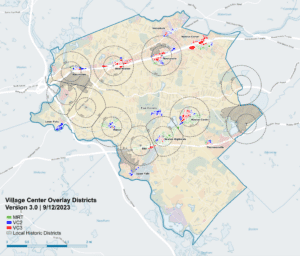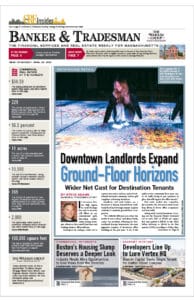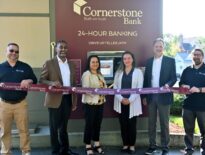The latest version of Newton’s plans to upzone areas around the city’s MBTA train stations shrinks the size of buildings allowed and reduces the number of parcels where new housing will be allowed.
But planners told city councilors Tuesday that they still think the plan can pass muster under the state’s MBTA Communities zoning reform law.
“The proposed zoning is expected to be more predictable than our current rules,” city long-range planner Zachery LeMel told a packed hearing at Newton City Hall.
The version presented Tuesday represents the third attempt at a package of changes in a multi-year process that was originally begun as a way to improve the viability of retail businesses in the city’s 12 “village centers,” which largely center on Green Line or commuter rail stations.
The committee is expected to discuss the proposal and community feedback – overwhelmingly negative at Tuesday’s hearing – next month before forwarding the proposal and any changes on to the full Newton City Council later this year. The city faces a Dec. 31 deadline from state officials to have MBTA Communities-compliant zoning in place lest it lose access to eight state grant programs.
Overall, the version presented Tuesday shaved a few feet off the maximum height for buildings in what are now three different types of zoning district: A mixed-use type of zoning taking advantage of recent changes to the state’s guidelines to allow 4.5-story buildings on 15,000-square-foot footprints as-of-right, a lower-density district focused on allowing up to 3.5-story multifamily buildings on 10,000-square-foot footprints as-of-right and a transition district that meant to buffer residential neighborhoods from commercial districts. That district allows 2.5-story, four-unit new buildings on 1,500-square-foot footprints or additions onto existing homes that create a maximum of six units in any one structure.
The changes also eliminated around 200 parcels from the rezoning and increased required setbacks in all three zoning districts, including strict changes that LeMel said were intended to push developers and property owners to conserve existing buildings and develop in line with the current look and feel of each neighborhood. A fourth type of lower-density zoning district was also eliminated, with many of those parcels converted to the transition district.
Finally, the change removes a two-story density bonus for buildings in the densest zoning area that set aside at least 30 percent of units as affordable housing, retaining a single-story bonus for buildings in either of the densest districts where 25 percent of the units are set aside as affordable housing.
In total, Newton must zone to allow 8,330 homes in multifamily buildings under the MBTA Communities law, including units in buildings already existing. City planning officials said they believe the zoning changes presented this week will still be able to hold around 9,300 units at full build-out, and represent a return to the city’s traditional development pattern, disrupted by a mid-1980s downzoning.
For some residents speaking at Tuesday’s hearing, even those changes were too much.
“We do not want to lose our family businesses. Nonantum needs your protection against this zoning plan,” Terry Sauro, a resident of the once-working-class neighborhood near the Newtonville commuter rail station and the Watertown line, told city councilors. “Developers will force our businesses out…even if they are able to come back the rent is likely to be astronomical.”
But in an open letter to local businesses and community members, Charles River Chamber of Commerce Executive Director Greg Riebman said that while he shares those worries, he argued inaction on the zoning plan would be even worse, as it would prevent new housing near retailers from adding vital foot traffic.
“Not allowing our villages to evolve is harming our businesses right now. And it’s only going to get worse,” he wrote.
In a statement emailed to Banker & Tradesman, Newton housing advocacy group Engine 6 said that it accepted the “compromise” inherent in the latest, scaled-back version of the city’s zoning proposal.
“Housing remains unaffordable for people who work here, families, young professionals and seniors hoping to downsize. We concur that we are in a housing crisis. Multifamily homes need to be allowed without a lengthy and risky special permit process,” the group wrote. “Engine 6 Newton Housing Advocates applaud the proposed zoning changes that should lead to more abundant and affordable housing and a more sustainable Newton.”







